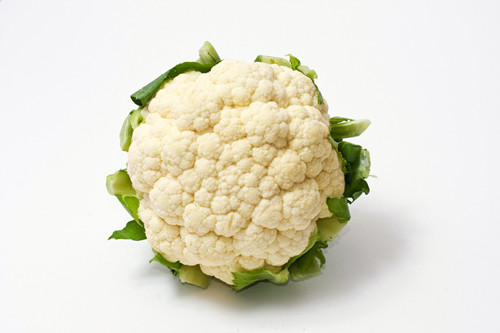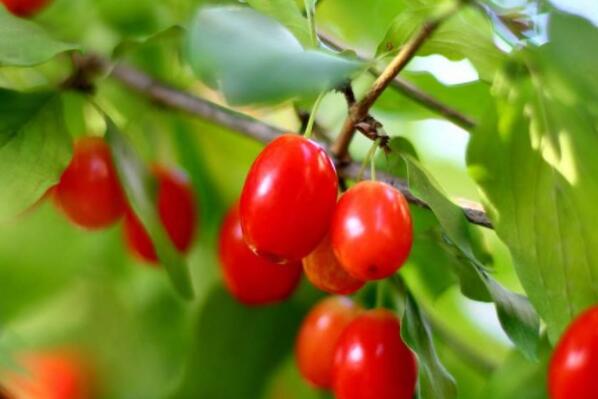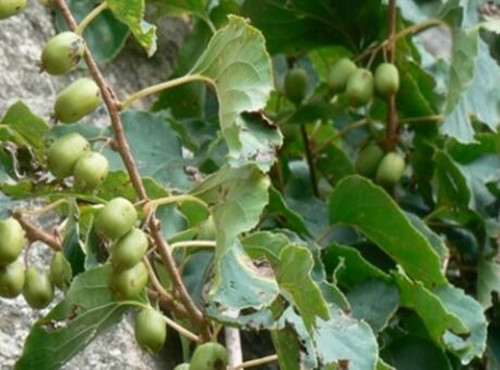How much is organic cauliflower per jin? What's the difference between and cauliflower? How's the output? Attached planting technique
When going to the market to buy cauliflower, I often hear some vegetable vendors say how good their cauliflower is, it is organic cauliflower, and its nutritional value is higher than that of ordinary cauliflower, so the price is higher. Many consumers are skeptical when they hear this because they don't know the difference between organic vegetables and cauliflower. In fact, organic cauliflower, also known as pine cauliflower and cauliflower, is a type of cruciferous cabbage. It was first planted and consumed in Fujian and Taiwan, and has rapidly spread from Fujian and Zhejiang to North and Central China in recent years. So, how much is pine cauliflower per jin? How's the output?

The shape and color of pine cauliflower is not much different from that of ordinary cauliflower, but it tastes better. Because its flowers are loose, it is bigger. Pine cauliflower is sweeter and more crisp in taste and more expensive. Ordinary cauliflower costs about 3 yuan per jin, while this kind of organic cauliflower costs about 4-6.5 yuan per jin, and the wholesale price is about 1.5 yuan.
Organic cauliflower is a kind of cauliflower, but it is more safe to eat, because organic cauliflower is a kind of cauliflower produced according to the standards of organic agriculture. It does not use any pesticides and fertilizers in the process of production. It also does not use other substances with chemical components. It is now the safest and healthiest vegetable on the market.
There are also obvious differences in nutritional quality between pine cauliflower and common cauliflower. Studies have confirmed that the contents of chlorophyll and carotenoids in pine cauliflower are significantly higher than those in cauliflower, and the content of soluble sugar is also higher than that in common cauliflower, which is the reason why the pedicel of pine cauliflower is green and tastes sweet. There was no significant difference in other nutrients such as vitamin C, dietary fiber and crude protein.
Compared with ordinary cauliflower, pine cauliflower has loose bulbs, long pedicels, green pedicels and tastes sweet, crisp and tender. When fried, it is not easy to boil, and the color of the pedicel becomes greener after heating. It can also be dehydrated and processed into dried pine cauliflower, which is mainly edible pedicel with green color and unique flavor, and is deeply loved by consumers.
Pine cauliflower also has a variety of health care functions, usually people eat, the body can quickly digest and absorb organic cauliflower, can play a variety of effects such as tonifying spleen and stomach, kidney and bone, usually eat some more, but also reduce the body's oxidation reaction. can inhibit the occurrence of cancer and other malignant diseases.
The yield of one mu of pine cauliflower is generally more than 4000 jin.
Planting technique of pine cauliflower
1. Suitable varieties and reasonable arrangement of farming time
The growth period of cauliflower after transplanting is generally about 60-100 days, which belongs to the middle-mature type. At present, the seeds of pine cauliflower mainly come from the varieties selected in Taiwan and Wenzhou.
The sowing time of pine cauliflower is generally sown in batches from July 15 to 23, and the harvest time is from November to December because of different varieties.
2. To cultivate strong seedlings and advocate raising seedlings with acupoints.
The sowing time of pine cauliflower often coincides with high temperature and rainy season, so fields with high terrain, not easy to flood and convenient for drainage and irrigation should be selected as seedbeds. Two-stage seedling raising method, nutrient block method or hole plate seedling method can be used to raise seedlings.
It is advocated to raise seedlings by means of acupoint tray. Select 50 or 72 hole hole plate, peat + perlite + vermiculite and other soilless matrix in a certain proportion, add a small amount of soil fungicide and trace compound fertilizer, watering and then loading plate. Sowing depth is about 0.5cm, sowing 1-2 seeds in each hole, covering a layer of substrate after sowing, watering thoroughly, covering sunshade net to moisturize. The summer scaffolding is covered with a 50% transparent sunshade net, water management is particularly important, pay attention to the water content of the disk matrix can not be too wet or too dry for a long time. 1000 times of gold can be used at seedling stage to prevent sudden fall and blight, and to control beet armyworm, Spodoptera litura, Plutella xylostella, jumping beetle, aphids and so on. Generally, the seedling age is controlled at about 23 days, and the seedlings are refined one week before transplanting.
3. Rational close planting and scientific application of fertilizer and water.
Before transplanting, the field of pine cauliflower applied organic fertilizer 500kg per mu, 45% ternary compound fertilizer 40 kg, borax 1kg. The width of the border is determined according to the topography, fertility and management level. Generally, the width of the border is 1.2 meters, and the plant spacing is 0.48-0.6 meters. Due to the difference of varieties, there are 1800 plants per mu. 33% Shi Tianpu 100-150ML50 weeding.
The planting of pine cauliflower was carried out in the afternoon or cloudy day, chlorpyrifos particles were applied in the hole, and the roots were watered continuously (thoroughly) after planting. Topdressing was carried out for 2 to 3 times, and urea was applied 5-10 kg per mu or 1500 kg of rotten biogas liquid per mu 10 days after planting, 45% compound fertilizer 40kg was applied before and after closing (1 month after transplanting), and urea was applied 10 kg per mu at the initial stage. Drain water in time after heavy rain to prevent stagnant water in the field and keep the soil moist during the pilling period.
4. Safe use of drugs and comprehensive prevention and control of diseases and insect pests
The main diseases and insect pests of pine cauliflower are root rot, downy mildew, soft rot, cabbage, aphids, whitefly, jumping beetle, diamondback moth, beet armyworm, Spodoptera litura and so on. Select disease-resistant varieties, distinguish the types of fungal bacterial diseases, implement crop rotation and timely drainage. After continuous overcast and rain, actively control root rot, downy mildew and soft rot, once every 7 days, 2 or 3 times in a row. According to the information of diseases and pests, we should actively adopt insect control methods such as moth sex attractants and lights, clarify the feeding characteristics of insect pests, use targeted drugs, select biological pesticides as far as possible, reduce the amount of pesticides, and strictly abide by the pesticide safety interval.
5. Frost prevention
6. Timely harvest and timely disposal of residual leaves
Generally, the harvest time of pine cauliflower is about 20 days after the ball. In order to make the bouquet white and clean, folded leaves or folded leaves can be used to cover or wrap the bulb when the bulb is 5 cm large to protect the bouquet from direct sunlight. When the flower bulb is fully expanded and the periphery begins to loose, it is the suitable harvest time for fresh pine cauliflower, and the harvest of flower ball for dehydration processing can be delayed appropriately. 3-5 leaves can be left during harvest to protect the bouquet from mechanical damage or contamination during storage and transportation. Sell cauliflower as soon as possible after harvest, or pre-cool and keep fresh in about 4 ℃ cold storage.
After bulb harvest, the residual roots and leaves in the field were treated in time to reduce the occurrence of diseases and insect pests. Roots and leaves are excellent green fodder for sheep and rabbits.
Time: 2019-03-20 Click:
- Prev

What does the deciduous tree dogwood look like? How much are the seeds and saplings? What are the planting techniques?
Cornus officinalis, also known as cornus meat, jujube, chicken foot, cornus meat, medicinal jujube, Tianmu seed, jujube, florescence 3-4 months; fruiting period 9-10 months. So what does it look like? How much are the seeds and saplings? What are the planting techniques? Learned from Uncle Wang, the grower.
- Next

What does the national first-level key protected wild plant rattan jujube look like? How to plant it? What are the effects and effects?
Rattan jujube, endangered species. Also known as bitter jujube, woody vine. There is only sporadic distribution in the narrow range of Jinghong in Xishuangbanna, which was born at the edge of the seasonal rainforest in the valley of 620 meters above sea level. This is the only genus and species in China. So, what does rattan jujube look like? How to plant it? What are the effects and effects? What does rattan jujube look like?
Related
- Fuxing push coffee new agricultural production and marketing class: lack of small-scale processing plants
- Jujube rice field leisure farm deep ploughing Yilan for five years to create a space for organic food and play
- Nongyu Farm-A trial of organic papaya for brave women with advanced technology
- Four points for attention in the prevention and control of diseases and insect pests of edible fungi
- How to add nutrient solution to Edible Fungi
- Is there any good way to control edible fungus mites?
- Open Inoculation Technology of Edible Fungi
- Is there any clever way to use fertilizer for edible fungus in winter?
- What agents are used to kill the pathogens of edible fungi in the mushroom shed?
- Rapid drying of Edible Fungi

